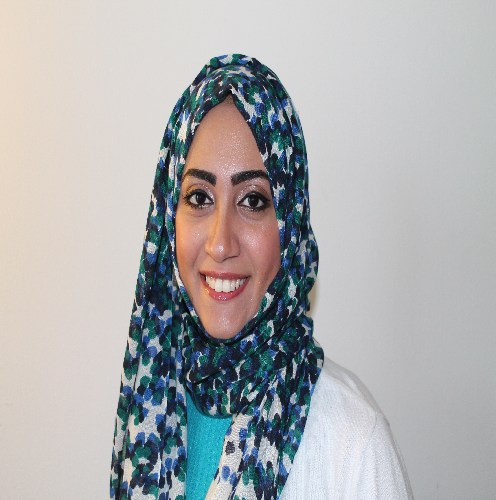Day 2 :
- Blood Disorders | Diagnosis and Treatment
Session Introduction
Johns Stephen Batchelor
Central Manchester Foundation Trust, UK
Title: The pathogenesis of spontaneous intracranial hemorrhage in patients with hematological malignancy

Biography:
Johns Stephen Batchelor is currently a Consultant in Emergency Medicine at Central Manchester Foundation Trust, England UK. He is also the Honorary Lecturer at Manchester Metropolitan University. He has graduated from Leeds University, England, in 1982. He is a Fellow of the Royal College of Surgeons of Ireland and Fellow of the Faculty of Emergency Medicine, England. He undertook his MD thesis at University College, London. He has written extensively on the subject of minor head injuries. He has presented a paper in Paris in 2012 on a Meta-analysis looking at the relationship between cerebral micro bleeds and antiplatelet agents. He has also recently published a meta-analysis on the effect on mortality of platelet transfusions in adults with spontaneous or traumatic antiplatelet associated intracranial hemorrhage. His current research interest lies in the area of risk factors for intracranial hemorrhage in both adults and pediatrics secondary to coagulopathy and thrombocytopenia.
Abstract:
Spontaneous intracranial hemorrhage is a well recognized complication in patients with hematological disease. Intracranial hemorrhage is the second leading cause of death in patients with acute myeloid leukemia. The reported mortality is over 50% for patients with hematological malignancy and spontaneous intracranial hemorrhage. The reported incidence of spontaneous intracranial hemorrhage appears to be slightly higher in acute myeloid leukemia (AML) and chronic myeloid leukemia in blast crisis than in other forms of hematological malignancy. The distribution of ICH is as follows: intraparenchymal hemorrhage accounts for about 60% of the reported case series. The remaining sites are distributed between the cerebellum, brainstem, basal ganglia, subarachnoid, subdural, intraventricular and epidural regions. Over 50% of patients will having more than one intracranial bleeding site on CT. Previously proposed risk factors for spontaneous intracranial bleeding include: Direct invasion by tumor cells, invasive intracranial sepsis, hyper leukocytosis and coagulopathy. Abnormalities of clotting include DIC, thrombocytopenia and prolonged prothrombin time. Coagulopathy and thrombocytopenia are probably not the main factors responsible for spontaneous intracranial hemorrhage in view of the fact that neither platelets nor clotting factors are responsible for maintaining cerebral vessel integrity under normal physiological conditions. Cohort studies from patients with idiopathic thrombocytopenia have shown a poor correlation between platelet count and the risk of spontaneous intracranial hemorrhage in both adults and children. Batchelor has shown that coagulopathy in patients with traumatic intracranial bleeding increases the risk of progressive hematoma progression by an odds ratio of 6.176 (95% CI: 4.727-8.069). This paper aims to explore other factors which may account for spontaneous ICH in patients with hematological malignancy.
Nidal A Qinna
University of Petra, Jordan
Title: The quality of blood sample collection for preclinical testing: A focus on rat tail bleeding method

Biography:
Nidal A Qinna is an Associate Professor in Pharmacology and currently the Head of Pharmacology and Biomedical Sciences Department at University of Petra, Jordan. He has received his Doctorate (PhD) in Pharmacology in 2005 from the University of London, King’s College London, UK. He is the holder of FELASA-C License for conducting research on laboratory animals and currently managing the Animal House Unit and University of Petra. His expertise and research interests include animal models of diseases, conducting safety and toxicity studies, structure activity relationships in drug discovery, in vivo pharmacokinetic and pharmacodynamics studies, drug interactions, protein drugs, ethnopharmcology and surgical animal models.
Abstract:
Constructing a pharmacokinetic profile of a drug is usually done by collecting multiple blood samples from animals. Such samples can be easily collected from large animals by vein punctures or simply by withdrawing blood using a suitable syringe. Conversely, collecting multiple blood samples from small exotic animals is considered difficult. Generally, tail cut bleeding and tail clipping methods for collecting repetitive blood samples are considered aggressive and associated with post recovery pain. Nevertheless, these methods are routinely conducted in veterinary clinics by well trained practitioners. However, special considerations and training must be undertaken when using these methods for drug discovery in order to reduce pain and stress associated with such techniques. Toe clipping, nail clipping and ear clipping are not acceptable in veterinary hospitals and will probably not produce diagnostic samples. Therefore, using these techniques in drug discovery is limited. On the other hand, tail bleeding methods are widely used and considered easy and less problematic to the practitioner. After acknowledging the advantages and disadvantages of collecting blood samples by tail bleeding methods it was important to test these methods in our laboratories to ensure its validity in drug pharmacokinetic studies and biological preclinical investigations.
Visweshwar Nathan
University of South Florida, USA
Title: Intracranial hemorrhage-with oral anti-coagulant therapy
Biography:
Nathan Visweshwar has completed his Medical training in Madras Medical College and proceeded to UK and later to Canada for his training in Medicine andHematology. He was in Middle East & Asia practicing Clinical and Laboratory Hematology. He is presently the Director of the Hemophilia/Hematology program in the University of South Florida, Tampa, FL. He has taken part in more than 50 clinical trials, both academic and drug sponsored clinical trials
Abstract:
According to data from the National Electronic Injury Surveillance System (NEISS), warfarin is the most common drug-related cause of hospitalization (accounting for 33% of such hospitalizations) for adverse events among older adults in the U.S [1]. Incidence of atrial fibrillation increases with age, with a prevalence of 0.1% in people over 55 years of age and 90% in those over than 80 years. The number of patients with atrial fibrillation is likely to increase 2.5-fold during the next 50 years, reflecting the growing proportion of elderly individuals [2]. Incidence of intracerebral hemorrhage in patients receiving oral anticoagulants ranges from 0.3% to 1% per year [3]. Warfarin-related intracerebral hemorrhage carries a particularly high risk of neurologic deterioration and death because of a high rate of hematoma expansion of about 50%. Novel oral anticoagulants (NOACs)--apixaban, dabigatran, and rivaroxaban--have a significantly smaller risk of intracerebral hemorrhage (ICH). Nearly after fifty years of warfarin use, the newer oral anticoagulants are taking over its place in management of both arterial and venous thrombotic states. There is no ideal anticoagulant, and issues regarding predictors of hemorrhage, monitoring anticoagulant therapy, early diagnosis and improving overall survival of patients with intracranial hemorrhage is still challenging.
Khulud Abudawood
University of Florida College of Nursing, USA
Title: What matters for people with sickle cell disease and their families?

Biography:
Khulud Abudawood is from Saudi Arabia. She has completed her Master of Nursing Sciences in 2014 from the University of Pennsylvania. Currently, she is in her third year as a Ph.D. student at the University of Florida, College of Nursing. Her research interest is in Sickle Cell Disease, improving the quality of life, and symptom management. She is in the process of publishing manuscripts based on the study findings with her Chair Dr. Saunjoo Yoon, Ph.D., RN.
Abstract:
Sickle cell disease (SCD) is a hereditary blood disorder. It is highly prevalent in Saudi Arabia (SA), causing serious complications which decrease the quality of life (QoL) and cause high mortality in young adults. This systematic review aims to evaluate the current status of SCD in SA compared to the US, and provide practical recommendations for patients with SCD, their families and healthcare providers. Also, this presentation proposes the health outcomes palliative care theoretical model to postulate integrative and comprehensive care for individuals with SCD to improve their QoL across the spectrum of illness, which will be inclusive of their physical, psychological, emotional, spiritual and social health issues.
Methods: A total of 32 articles were identified to review the prevalence of SCD in SA, pain management issues, frequent disease-related complications, manifestations, currently available preventive methods, and factors contributing to the incidence rate. Original articles were found and analyzed regarding the role of palliative care for persons with SCD using Walker and Avant's theory analysis criteria.
Results: Findings indicate 1) importance of implementing a newborn screening (NBS) program to identify SCD and to provide early interventions, 2) organized and systematic evaluation of premarital screening (PMS) program that has been implemented since 2004, 3) necessity of public and family education about self-care management of SCD in SA.
Furthermore, the health outcomes palliative care theoretical model is a middle range theory introduce a practical approach to guide future research and interventions. It included concepts of palliative care in addition to other disease modifying and symptom control interventions, advance planning of care and supportive care. It focuses on both personal and environmental factors as predictors of the health outcomes. Measuring health outcomes such as the quality of life, perceived health status, pain and symptom experience, biological functioning and functional status, can be used by healthcare providers including nurses, physicians and researchers to identify the impact of palliative care on the lives of people with SCD.
Conclusion: Future studies are needed to develop culturally sensitive interventions to manage SCD symptoms in SA including educational and non-pharmacological interventions. Education for effective self-care management may empower individuals and their families to manage symptoms, decrease emergency room visits, and improve the QoL of persons with SCD in SA. Moreover, the proposed model for individuals with SCD provides a new paradigm of care that meets the needs and goals of patients with SCD and their families. Also, it can be used in generating hypotheses to guide clinical research and practice. Future studies and empirical testing are needed to examine the relationships between the proposed concepts
Vandana Sharma
All India Institute of Medical Sciences, India
Title: Functional characterization of T-cell subsets in acquired aplastic anemia patients: Pilot study

Biography:
Vandana Sharma is currently pursuing PhD under the guidance of Dr. Tulika Seth, Additional Professor, Department of Hematology, All India Institute of Medical Sciences, India.
Abstract:
Acquired aplastic anemia (aAA) involves immune mediated destruction of hematopoietic stem cells by T lymphocytes. Response to immune suppressive therapy (IST) is 50-60%. Aim of study was to evaluate the frequencies and function of T-cell subsets in peripheral blood (PB) and bone marrow (BM) of newly diagnosed, untreated aAA patients compared to that of controls. 15 aAA patients and 15 healthy controls were studied. Th1 (CD4+IFNγ+), Th2 (CD4+ IL4+), Th17 (CD4+ IL17A+) along with CD8 surface marker and T-regulatory cells (Tregs; CD4+ CD25+ FOX P3+) were analyzed in PB and BM of patients and in PB of controls with three color flow cytometry. In PB of patients the mean percentage frequencies of different cell types were Th1=1.72, Th2=1.09, Th17=1.13, CD8+IFNγ+=1.61, CD8+IL4+=0.68, CD8+IL17a+=0.78 and Tregs=2.84, while in PB of controls the respective frequencies were Th1=0.92, Th2=0.44, Th17=0.60, CD8+IFNγ+=0.83, CD8+IL4+=0.37, CD8+ IL17a+=0.46 and Tregs=6.05. There was a significantly higher percentage of different cell types in PB of patients as compared to PB of controls i.e., Th1, Th2, Th17, CD8+IFNγ+, CD8+IL4+, CD8+ IL17a+ (all p values <0.05), whereas Tregs mean frequency was lower in patients than controls (p=0.0001). There was no difference in frequencies of respective cells between PB and BM of patients. Significantly increased Th1, Th2, Th17, cytotoxic T-cells and decreased T-regulatory cell frequencies skew the ratio of T-lymphocytes in aAA. These cells and their effector cytokines injure bone marrow rendering it hypocellular.
Areeg bala elbashir Mohamed ahmed
King Abdulaziz Hospital-Al Ahsa, Saudi Arabia
Title: Assessment of Chemotherapeutic Responsiveness in Non-Hodgkin Lymphoma Patients at KAH, Al Ahsa KSA

Biography:
Areeg Bala Elbashir Mohamed Ahmed completed MD from University of Khartoum, Sudan. Her research interests are Oncology and Molecular Medicine.
Abstract:
Lymphoma is a blood cancer that develops in the lymphatic system, grows in out of control and develops malignant cells. These abnormal cancer cells grow and make more abnormal cells which then accumulate forming masses. The two main types are Hodgkin lymphoma and non-Hodgkin lymphoma (NHL). NHL is a group of blood cancers that have similar characteristics in how they develop, and its causes are still not clear. Lymphoma presents with a wide range of symptoms including cough, sweating, fatigue, fever, night sweat, chest pain, SOB, lymph node enlargement and weight loss. Diagnosis is made by laboratory studies, images, biopsy, and cytogenetic methods. Staging is based on the size and locations and whether the tumor spread to other side of the body, from stage 1 to stage 4. Lymphoma is a curable disease and people can live long life after being diagnosed. Chemotherapy has generally been presented as a rational and promising way to cancer treatment throughout the years. It is generally given in cycles: A treatment period is followed by a recovery period, then another treatment period, and so on. Many different chemotherapy drugs are available, and can be used alone or in combination to treat a wide variety of cancers. The regimen presently used in Saudi Arabia is combinations of Cyclophosphamide, Hydroxydaunorubicin, Oncovin (vincristine), Prednisolone, and Rituximab (CHOP, R-CHOP). The current literature lacks data on the subject to estimate the responsiveness in NHL patients in the Kingdom of Saudi Arabia. Through this study, I aim to determine the age distribution, gender, tumor type and stage, and type of chemotherapy used for patients with NHL, to evaluate the survival of chemotherapeutically treated NHL patients and to determine the incidence of common side effects encountered following starting chemotherapy. This retrospective study took place in King Abdul Al Aziz Hospital (KAH) in Al Ahsa, which is one of the five hospitals of MNGHA (Ministry of National Guard Health Affairs in Saudi Arabia). The study period was from October 2015 to January 2016; data of the targeted patients was collected from the medical records of the list of the patients who have visited the hospital for cancer treatment. A total of 35 eligible participants have been included. I found that 71.4% patients survived and 28.6% died within the first year of chemotherapy. The mean age of patients was 61 years. 45.7% were male and 54.2% were female. 85.7% had B-cell NHL and 14.3% had follicular lymphoma. 88.6% received R-CHOP and 11.4% did receive R-CVP. 45.7% were stage 1 and 22.9% were stage 4. 57.1% didn’t show any systemic side effects and 40% developed leucopenia. No significant different between gender for survival time in NHL patients (p=.448) was observed. Same goes for survival distribution for different kinds of chemotherapy (p=.240). for survival time and stages of NHL (p=.838).
Biography:
Dr. Chakra Chaulagain is an attending hematologist at Cleveland Clinic. He completed clinical and research fellowship in hematology and oncology at Tufts University Medical Center in Boston. His clinical and research interests include hematologic malignancy with special interest and expertise in clonal plasma cell neoplasms including AL amyloidosis.
Abstract:
Systemic AL amyloidosis (AL) is a multisystem disease characterized by organ damage due to monoclonal free light chains produced in the bone marrow by a neoplastic clone of plasma cells. The clone can be targeted by various treatments with the goal of curbing the production of the organ toxic light chains and thereby stopping and possibly reversing the organ damage present at the time of diagnosis. AL amyloidosis remains an incurable disease despite treatment options that include steroids, cytotoxic chemotherapy, risk-adapted melphalan and autologous hematopoietic stem cell transplantation, proteasome inhibitors and immunomodulatory drugs. Newer and effective treatment approaches that can rapidly reverse the organ damage are urgently needed. Monoclonal antibodies targeting the plasma cells may become available in future for management of this disease. An updates for the practicing clinicians as well as the areas of future research will be reviewed in this presentation.
